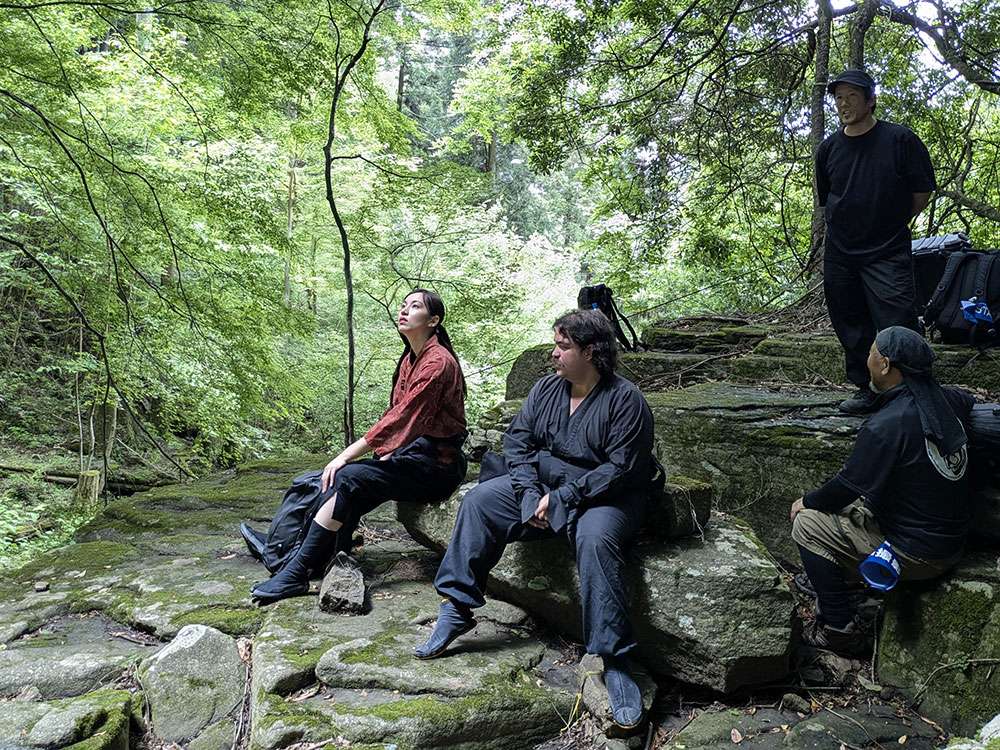Ever since I had first heard that waterfall meditation was offered at Akame 48 waterfalls, I was simply bursting to go. As someone who already likes to live life in the slow lane, I’ve had the opportunity to do something similar back in New Zealand in Milford Sound.
Around the world, many cultures have a reverence for nature, but water in particular holds a significant space as a source of life. Running water was used as a purifying and cleansing agent for mind, body and soul. Like Shinto, Māori also has a tradition of venerating waterfalls. There are Māori legends that taniwha (guardian spirits) live in waterfalls. Shinto beliefs hold that places like waterfalls attract great spirits and gods to live in them.
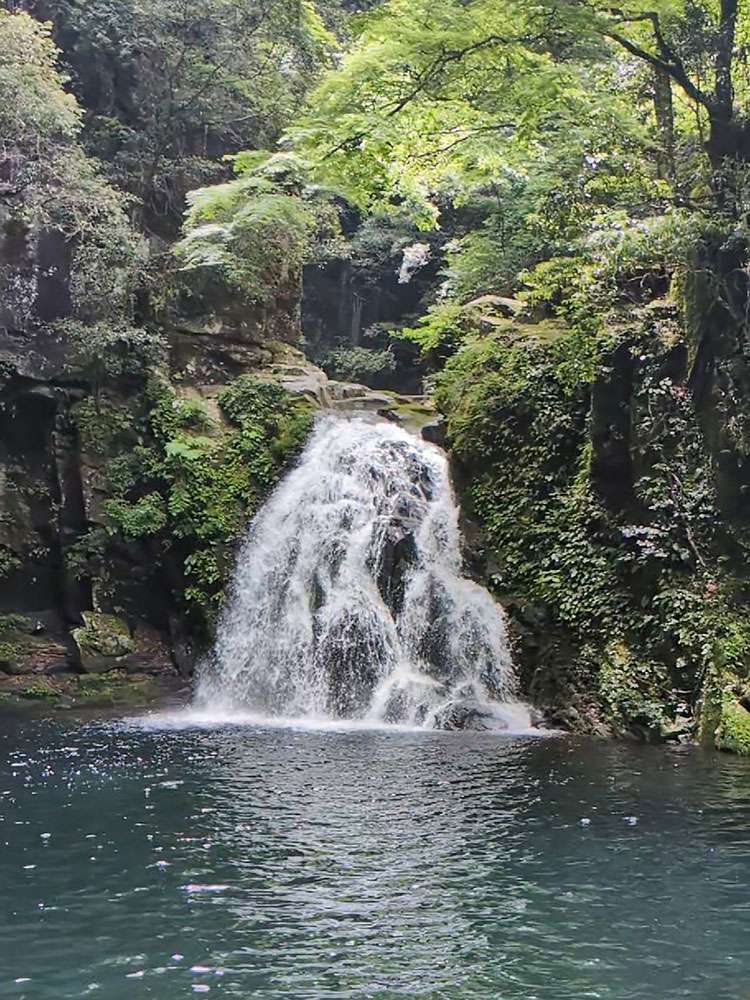
As someone who likes to live in the slow lane, there is something about meditation in nature that appeals to me on a deep level. It’s the chance to simply step back and be still, be alone with yourself and your thoughts, while life thrums around you. Would I be able to connect in the same way and find myself or would it be too different in an unfamiliar land, an unfamiliar nature.
When I heard that I had the opportunity to go and experience the meditation as a part of my job? Absolutely no hesitation, I was immediately ready and raring to go!
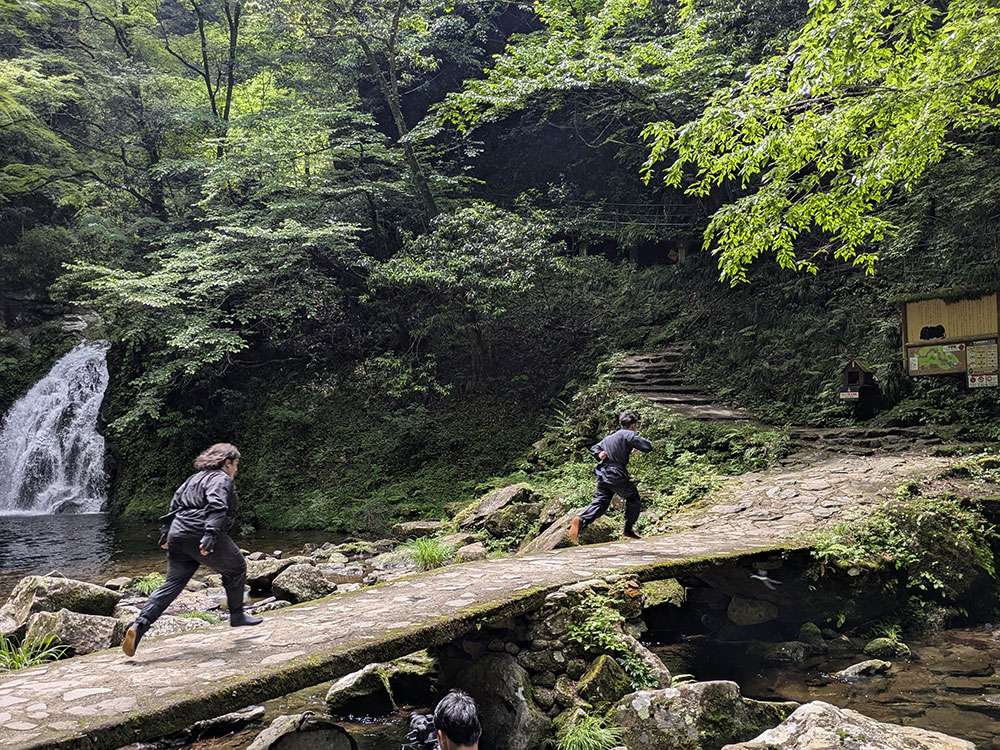
I’ve been to Akame 48 Waterfalls quite a few times now both on the clock and as a private outing, but I’ve never actually been to Dainichi Waterfall part of the trail. I have only ever seen the waterfall in the tourism guidebook and other advertisements. While the pictures are certainly impressive, it did not prepare me for how it would be in reality.
It’s off the usual waterfall hiking path, quite literally, in order to even get to the start of the Dainichi path, you must cross the river by hop, skip, and jumping your way across several rocks that create a makeshift bridge. I am not the most athletically inclined person by any means, but even I was able to slowly scramble my way across. Surely the hard part was over, right? Maybe I’d have to hike a bit across another path, but this one would surely be paved with rails like the other ones, right? ....right?
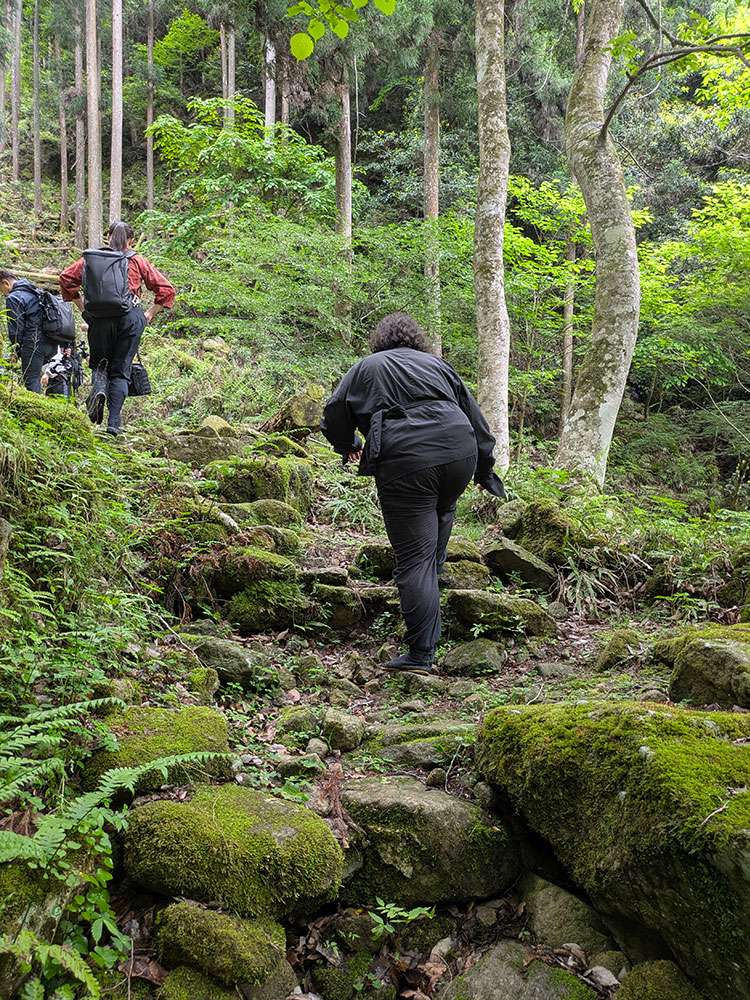
My naïve hope was shattered as I was directed towards a particularly steep and basic path up the mountain. Not only were there no permanent rails in place to guide, I would also have to ascend by climbing upon rocks the entire way. These rocks were covered with moss and had been smoothed over through years of foot traffic. I felt like I was constantly in danger of slipping, falling down the mountain, and resetting my progress. If I wanted to have this meditation experience, I would have to earn it.
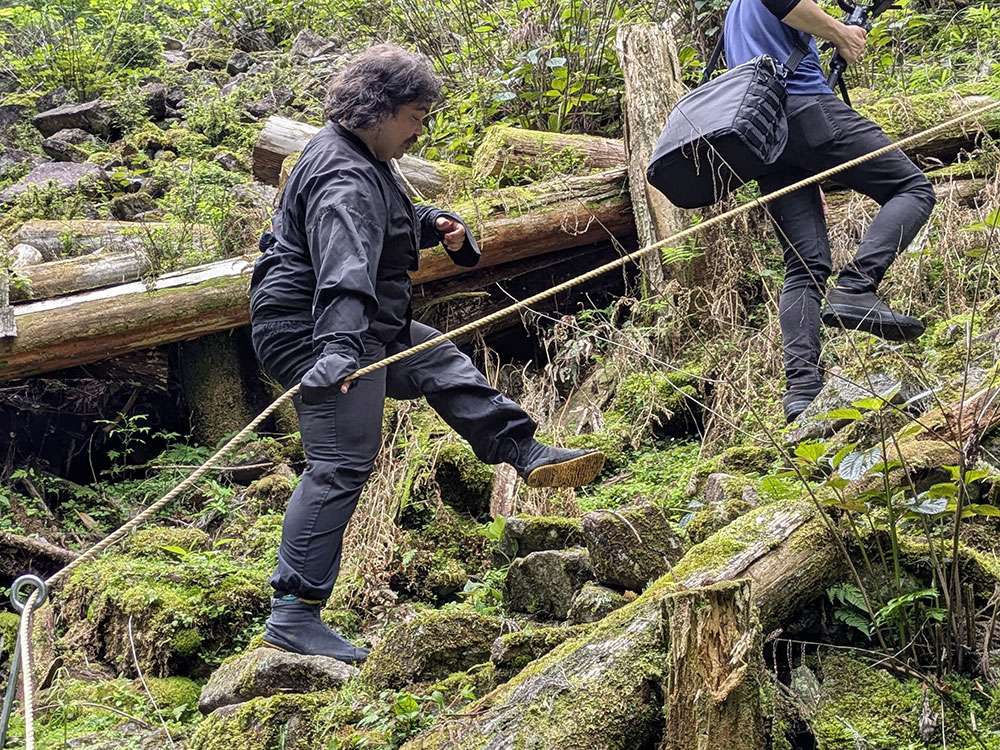
Maybe if I had more experience with this path I could be like our guide, Mr. Sera, who not only ran up the path but did so with a bucket containing most of our gear on his back. Alas, I am not, so I had to painfully and laboriously battle my way up to the waterfall. The sight that greeted me at the top was worth all the effort.
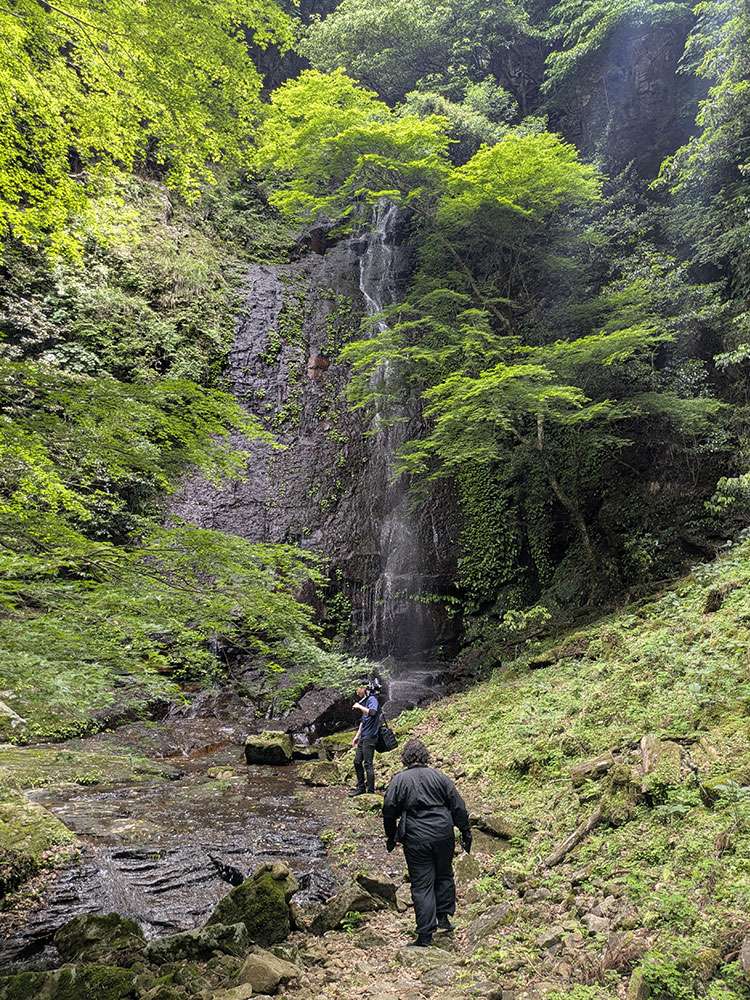
When we plateaued, Dainichi Falls and its breathtaking scenes were there to greet us. Stretching far above the tree line, Dainichi Falls is a long and narrow waterfall ending in a shallow basin with a clear brook gently trailing off into the distance.
I was in sheer serenity of this sacred space. I could feel the energy and just imagined how the generations before me would have reacted to finding this place. In that moment before even stepping underneath the waterfall, I knew that this place would resonate in the same way as meditating in New Zealand; the connection to nature was there and ready to be embraced.
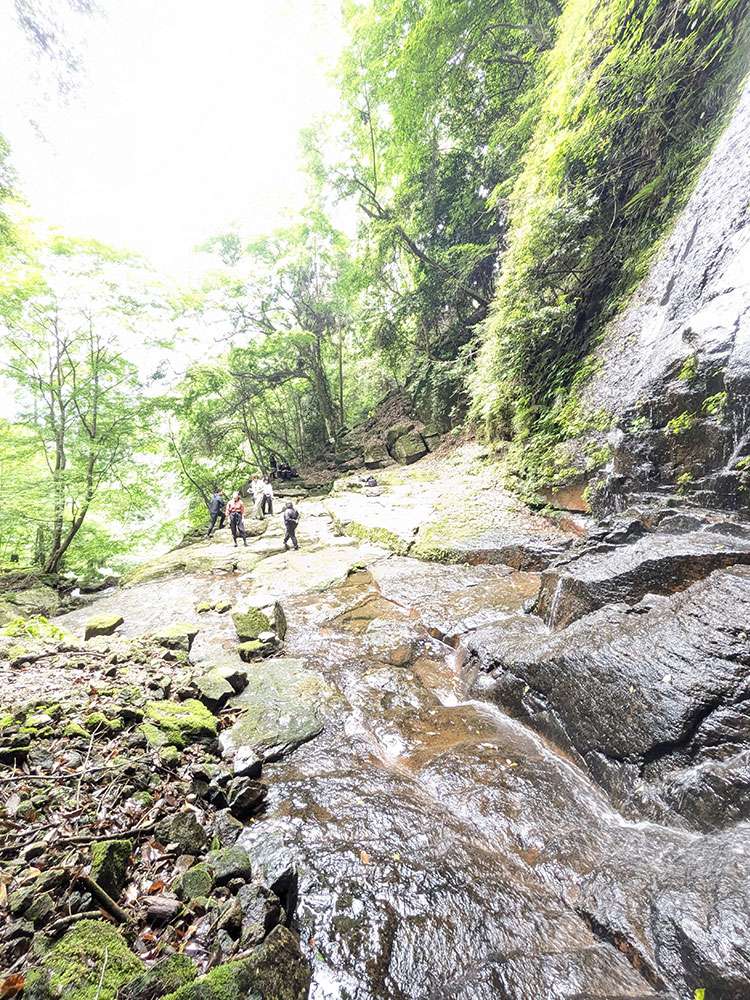
In response to this swelling of spirituality and emotion, I performed a haka as a means of release. Usually when people think of haka, they picture the All Blacks rugby team performing “Ka mate” before a match. While this is not wrong, haka is so much more than just a traditional dance done before a sports event. It is done to welcome guests, at weddings, or to embrace Māori cultural identity. In other words, it is done at high emotional times as a way of expressing yourself.
By performing a haka here to express my appreciation, I believe I created a connection of two vastly different cultures through this wonderful space we call nature. It felt a bit odd because I was wearing a traditional ninja outfit, but I hope it may have heightened the unique connection.
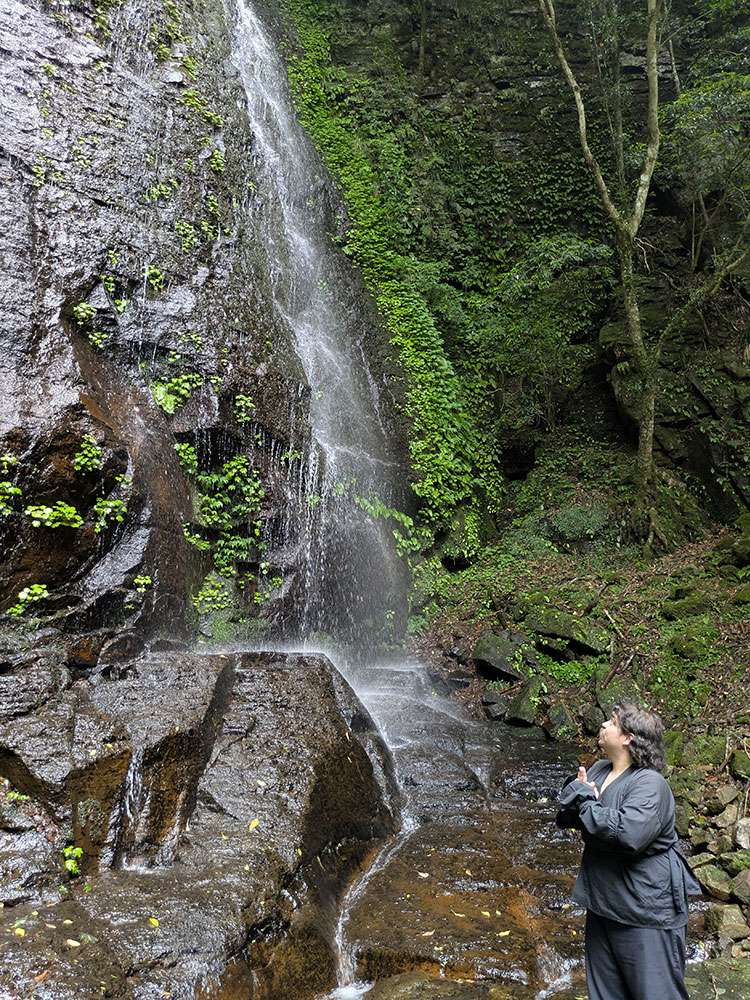
All day long, I had been told, despite the heat the water would be freezing cold and that I had to prepare for that. With the help of our guide and preparing for the worst, I gingerly made my way to the small crevasse under the waterfall, where you can sit or stand during your meditation.
Despite all the warnings, the water felt refreshingly cool, rather like turning the cold tap on at home. The water rushed over me, and as it did, all I could concentrate on was maintaining my breathing.
In and out.
All the stress from work and life was pushed away.
In and out.
The flow of sound from the surrounding area eased away.
In and out.
In that moment, it was just me.
In and out.
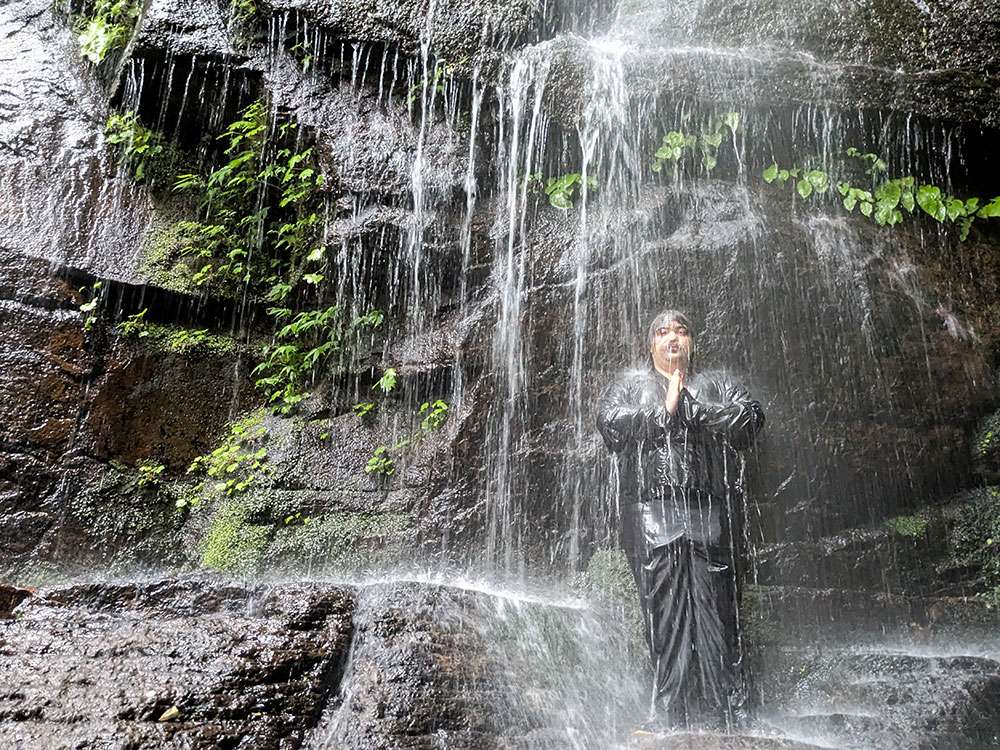
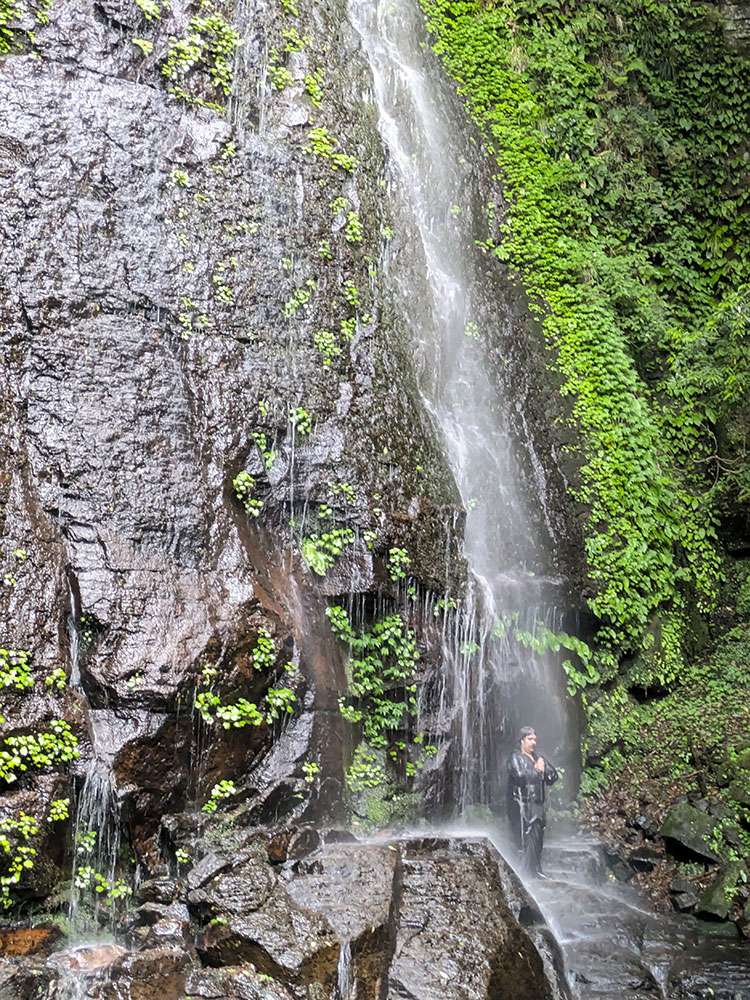 For those few short minutes standing underneath the waterfall, I could truly be at peace. I was connected to nature and nature was connected to me, in a way that is hard to describe if you have never had this experience. It is uniquely personal and yet at the same time, I believe that it’s something we can all share. That is the point of meditation: to reflect and refresh your mind, body, and soul. While I believe you can practise meditation at any time, doing anything, sometimes it is best to take a step back, stand underneath a waterfall, and immerse yourself in nature.
For those few short minutes standing underneath the waterfall, I could truly be at peace. I was connected to nature and nature was connected to me, in a way that is hard to describe if you have never had this experience. It is uniquely personal and yet at the same time, I believe that it’s something we can all share. That is the point of meditation: to reflect and refresh your mind, body, and soul. While I believe you can practise meditation at any time, doing anything, sometimes it is best to take a step back, stand underneath a waterfall, and immerse yourself in nature.
If you travel to East Nara Nabari, be sure to take advantage of our amazing nature and try this unforgettable experience.
